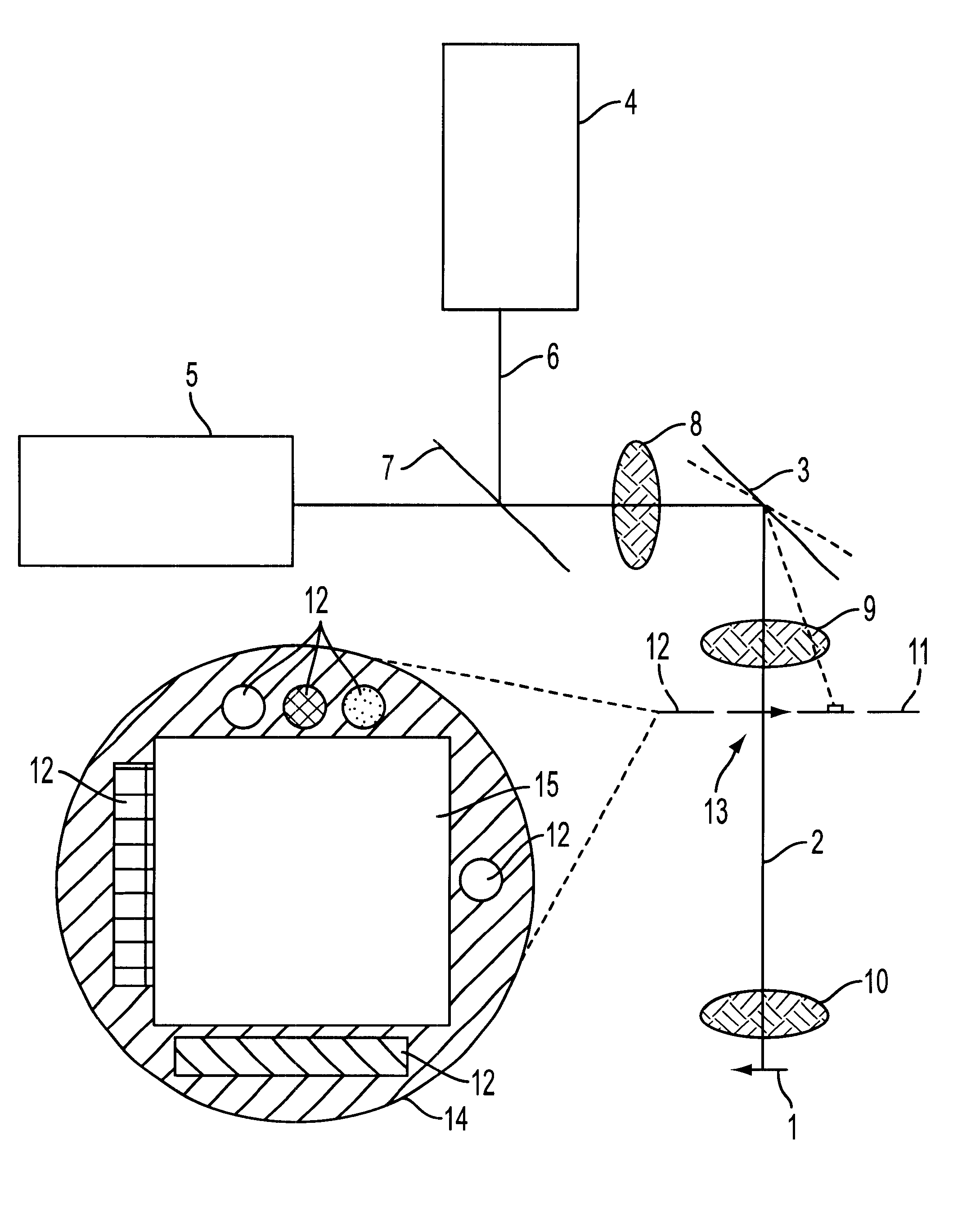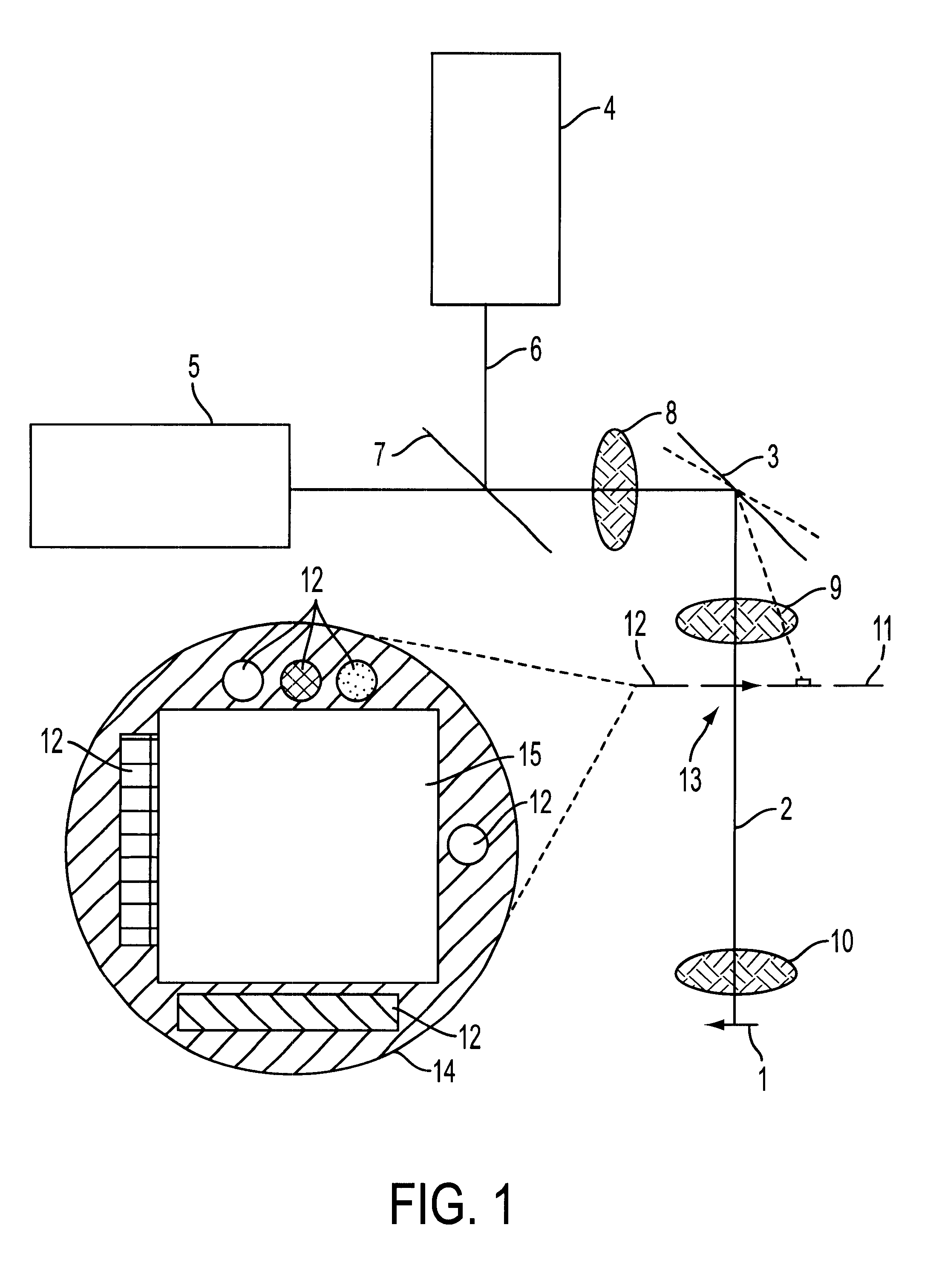Confocal laser scanning microscope, calibration unit for a confocal laser scanning microscope and method for calibrating a confocal laser scanning microscope
a laser scanning microscope and laser scanning technology, applied in the field of laser scanning microscopes, can solve the problems of shortened service life, intensity fluctuations, and substantial difficulties in calibrating systems, and achieve the effect of simple configuration of teaching
- Summary
- Abstract
- Description
- Claims
- Application Information
AI Technical Summary
Benefits of technology
Problems solved by technology
Method used
Image
Examples
Embodiment Construction
The sole figure shows a diagrammatic representation of an arrangement for calibrating a confocal laser scanning microscope, it being possible for an object 1 to be scanned by a scanning beam 2. For better comprehension of the teaching according to the invention, the figure shows not only the scanning beam 2 scanning the object 1, but the scanner 3, the laser light source 4 and the detector 5. The laser beam 6 is emitted by the light source 4, and passes via a beam splitter 7 via a suitable optical system 8 to the scanner 3. Starting from there, the scanning beam 2 is directed via an eyepiece 9 and an objective 10 to the object 1. Located between the eyepiece 9 and the objective 10 is an intermediate image 11, in the plane of which the calibration means 12 are arranged.
In the exemplary embodiment selected here, the calibration means 12 are arranged at the edge of the intermediate image 11 outside the actual image field 13. Provided for this purpose is a calibration template 14 which ...
PUM
 Login to View More
Login to View More Abstract
Description
Claims
Application Information
 Login to View More
Login to View More - R&D
- Intellectual Property
- Life Sciences
- Materials
- Tech Scout
- Unparalleled Data Quality
- Higher Quality Content
- 60% Fewer Hallucinations
Browse by: Latest US Patents, China's latest patents, Technical Efficacy Thesaurus, Application Domain, Technology Topic, Popular Technical Reports.
© 2025 PatSnap. All rights reserved.Legal|Privacy policy|Modern Slavery Act Transparency Statement|Sitemap|About US| Contact US: help@patsnap.com


